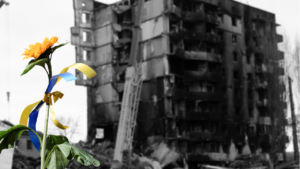Two subjects over the past few days caught my eye: Somalia and food. Both topics touch on resilience, the first describes the importance of women in making societies resilient, the second explores how to provide food security against catastrophic extinction.
In an earlier blog (Out of Africa), I mentioned that an Islamic coalition had taken over Mogadishu, Somalia, and the area surrounding it. Saturday, in the first of three Washington Post articles by Craig Timberg [“Guns Finally Silent in Somalia’s Capital”], he discusses the joy that most individuals feel now that their lives are not threatened on a daily basis.
The thugs manning the roadblocks are gone. The warlords are on the run. And the guns in a city long regarded as among the world’s most heavily armed have fallen silent. Most, in fact, have disappeared from view. Since Islamic militias took control of this city last week, U.S. and other Western officials have worried that Mogadishu’s new leaders will impose a severe, Taliban-style government and harbor terrorists. But after 15 years of deadly chaos, residents interviewed here expressed nothing short of jubilation that somebody has made their city safe and that, for now, the daily crackle of gunfire is finally gone.
The article in Sunday’s Washington Post [“Gender-Based Violence Galvanized Warlords’ Foes: Somali Women Gave Crucial Support for Islamic Militias”], described how Mogadishu’s women rose up against the rape and violence carried out by warlord supporters. Girls as young as 4 and 5 were kidnapped and abused. As the article states,
An epidemic of sexual violence during 15 years of lawlessness in Somalia was among the factors that strengthened opposition to this city’s notorious warlords, residents said. The Islamic militias who drove them out in months of recent fighting were embraced as keepers of public order, as a force strong enough and pious enough to keep Mogadishu’s daughters safe. That helped the militias win the support of Mogadishu’s increasingly influential women, who in recent years had joined the job market en masse to support their families in the midst of a collapsing economy. On streets throughout this ruined city, they sold vegetables, plastic jugs of gasoline and khat, a popular, addictive leaf chewed widely here.
It seems that men must constantly relearn the fact that women can be a powerful political force. Aristophanes wrote about it in his famous play Lysistrata and the warlords of Somalia know it today.
“Somalia was saved because of the Somali women,” said Khadija O. Ali, 47, founder of a women’s group here and a graduate student in conflict resolution at George Mason University. “I think it is even something that the men acknowledge now. Finally.”
Somali women, however, are learning that a “peace at all costs,” strategy does have a downside.
Ubah Mohamed, 34, a widow with seven children, was among the women who joined Mogadishu’s workforce. But she said the beauty shop she opened a decade ago has been losing regular customers, from more than 300 to about one-third that number, as radical Islamic values appear to be gaining wider acceptance. “The militias patrol our areas looking to see if girls are going out with boys,” she said. “So the girls don’t come to beauty salons like ours.” Mohamed, meanwhile, began wearing a black hijab to cover her own hair out of fear of what the newly powerful militias might do. In a city where residents report that public viewing of the World Cup has been curbed, she predicted that beauty shops, including hers, would be closed soon as well.
In final article in today’s Washington Post [“In Mogadishu, a New Moral Code Emerges”], Timberg relates the story of a young Muslim couple that dreams of the security and freedom found in America, but they have learned that they must conform to a stricter Muslim law since they live in Mogadishu.
Many residents of Mogadishu have embraced the militias and their enforcement of Islamic law through neighborhood courts. But some young adults have bristled as their personal freedoms diminish. … Supporters of the Islamic militias acknowledge that their leadership is divided between extremists and moderates, and few are willing to predict which will consolidate power in the weeks and months ahead.
It’s fascinating that the Islamic Courts Union (the coalition of Islamic militias who seized Mogadishu) seems so quickly to have forgotten that it was the women who brought them to power. I believe those same women can find a way to outsmart the Islamic Courts Union as well. Their biggest challenge is facing the guns that still pervade the city.
To many young Somalis, the Islamic militias seem to bear an eerie resemblance to the old warlords. In many cases, they are in fact the same gunmen, carrying the same AK-47s while riding on the backs of the same pickup trucks, residents here said. As the secular warlords’ grip weakened, many of the families controlling the gunmen simply ordered them to switch sides.
The fact that gunmen so easily switched sides indicates that their support of the Islamists is only as deep as their pockets. Find a secular, non-violent way for the families to employ their sons gainfully and Somali society will be transformed overnight — and women will play a big role in that transformation.
Turning to the other subject — food — an article in today’s Washington Post [“The World’s Agricultural Legacy Gets A Safe Home,” by Rick Weiss] discusses the fact that work has begun on a huge vault on the Norwegian island of Svalbard to house seeds from world’s food producing plants. Although there are thousands of varieties for most of mankind’s favorite crops, the number of those crops is relatively small. In his book Guns, Germs, and Steel, Jared Diamond notes that five of the world’s leading crops (wheat, corn, rice, barley, and sorghum) account for “over half of all calories consumed by humans.” Promoters of the seed vault believe that their project will protect the world from a natural or man-made catastrophe that could devastate these crops.
Crop seeds are the source of human sustenance, the product of 10,000 years of selective breeding dating to the dawn of agriculture. The “doomsday vault,” as some have come to call it, is to be the ultimate backup in the event of a global catastrophe — the go-to place after an asteroid hit or nuclear or biowarfare holocaust so that, difficult as those times would be, humankind would not have to start again from scratch.
Svalbard was selected as the site for the doomsday vault because it isolated, cold throughout most of the year (even if global warming continues), and is accessible (and would remain so even if a new ice age commenced). Scientists are taking advantage of the same kind of permafrost that the remains of woolly mammoths to help keep seeds viable for millennia. Seeds stored there must have proven to have an 85% germination rate.
Scientists estimate there are 2 million varieties of plants used for food and forage today. That includes an astonishing 100,000 varieties of rice, the major staple of the human diet, and more than 1,000 varieties of banana, a nutritious fruit of global importance. Seeds from these crops, which can be smaller than poppy seeds and as large as coconuts, are invaluable repositories of plant DNA. They are the raw material that farmers and researchers rely on to develop more productive and nutritious plants that can cope with climate change, new diseases or pests.
The connection between Somalia and Svalbard is a healthy mixture of realism and optimism — with the optimists having the upper hand. The women of Mogadishu have carried on in the face of chaos and devastation. In some cases, they have thrived. They supported the Islamists in the short-run because they offered peace and stability. They move forward with some skepticism, but clearly with the hope that they can continue to make a difference in the society in which they live. The proponents of the doomsday vault fear a catastrophe that cripples the food chain, but express an ultimate faith that mankind will survive in order to take advantage of the precious seeds contained in the vault. That mixture of realism and optimism will be found in any resilient system.




